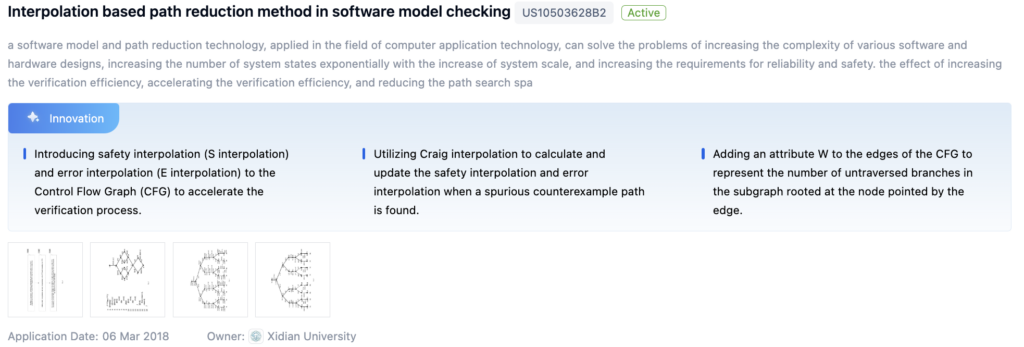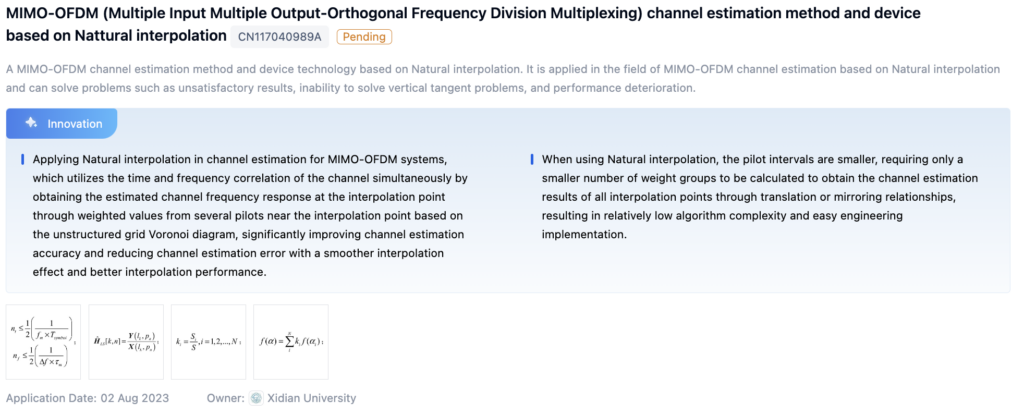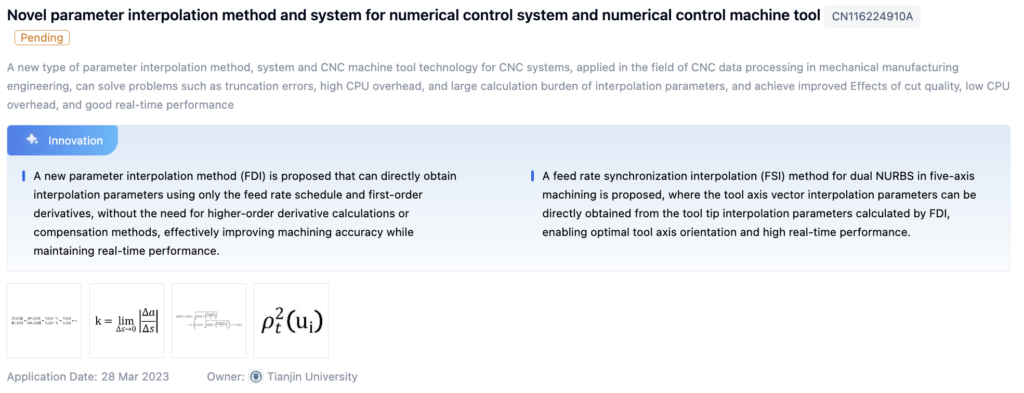
Technical Background and Objectives
Background
The field of ‘Improving Interpolation Accuracy’ has seen steady growth in both patent applications and academic literature over the past decade. Patent application data shows a consistent year-over-year increase, indicating sustained interest and investment in developing new interpolation techniques to enhance accuracy. This trend suggests the industry’s recognition of the importance of accurate interpolation methods and active pursuit of advancements. Although academic publications exhibit a more fluctuating pattern, the overall trend is positive. The consistent rise in patent applications implies that industry is translating academic research into practical applications, driving innovation and progress in interpolation accuracy.

Objectives
The primary objective is to explore and develop innovative techniques for improving the accuracy of interpolation methods across various fields such as computer graphics, signal processing, and numerical analysis. This research aims to address the challenges of traditional interpolation methods, which often suffer from accuracy limitations, leading to distortions or artifacts in the reconstructed data.
To get a detailed scientific explanations of Interpolation, try Eureka.
Technical Current Status Analysis
Interpolation Overview
Interpolation is crucial in fields including signal processing, image processing, computer graphics, and scientific computing. It reconstructs continuous signals or functions from discrete data points, enabling accurate representation and analysis of real-world phenomena.
Applications and Impact:
- Signal Processing: Upsampling, resampling, and bandwidth extension.
- Image Processing: Image scaling, rotation, and geometric transformations.
- Computer Graphics: Rendering smooth surfaces, animating objects, and generating realistic visual effects.
- Scientific Computing: Curve fitting, data approximation, and solving differential equations.
Technical Characteristics and Challenges:
- Interpolation Methods: Linear, polynomial, spline, and sinc interpolation vary in accuracy and computational complexity.
- Data Distribution and Density: Sparse or irregularly distributed data can lead to inaccuracies.
- Boundary Conditions and Extrapolation: Proper handling is necessary to avoid erroneous results.
- Noise and Outliers: Robust techniques are needed to handle noisy or corrupted data.
- Computational Complexity: High-order methods can be computationally intensive.
- Multivariate Interpolation: More complex and computationally demanding than univariate.
- Domain-Specific Requirements: Different applications may have unique requirements for interpolation.
Technological Paths:
- Adaptive and Data-Driven Methods: Develop algorithms that adapt based on input data characteristics.
- Advanced Signal Processing Techniques: Use wavelet analysis, sparse representations, or machine learning methods.
- Parallel and Distributed Computing: Leverage GPUs or cloud computing for real-time applications.
- Multivariate and Higher-Dimensional Interpolation: Efficient techniques for higher-dimensional data.
- Domain-Specific Techniques: Tailor algorithms to specific application requirements.
- Hybrid and Ensemble Methods: Combine multiple techniques for improving interpolation accuracy.
- Theoretical Advancements: Explore approximation theory and numerical analysis for new methods.

Research Content
Research Objectives
Develop innovative techniques and methodologies for improving interpolation accuracy, addressing challenges like accuracy limitations, distortions, and artifacts.
Research Direction and Focus
Advanced Interpolation Algorithms
- Develop adaptive and data-driven techniques that adjust dynamically to data properties.
- Incorporate machine learning and AI to model complex data patterns.
- Explore higher-order schemes for better approximation of nonlinear and irregular data.
Regularization and Constraint Techniques
- Implement regularization methods imposing smoothness or continuity constraints.
- Incorporate prior knowledge or domain-specific constraints.
- Explore sparse and compressive interpolation techniques exploiting data sparsity.
Error Analysis and Quality Metrics
- Develop robust error metrics and quality measures.
- Analyze error propagation and sensitivity to input data perturbations.
- Explore uncertainty quantification and confidence interval estimation.
Technical Development Roadmap
Key Areas of Advancement
- Deep Learning-Based Techniques: Using AI to enhance interpolation accuracy.
- Graph Neural Networks: Handling unstructured data interpolation.
- Multimodal Interpolation: Integrating heterogeneous data.
- Federated Learning: Addressing distributed data challenges.
- Explainable Models: Ensuring transparency and reliability.
- Robustness Against Adversarial Attacks: Developing secure interpolation methods.
- Fairness and Bias Mitigation: Ethical considerations in interpolation applications.

Main Player Analysis
Key Players and Focus
- Chinese Academy of Sciences: Advanced geostatistical methods, environmental modeling, and computational techniques.
- Huawei Technologies Co. Ltd.: Developing advanced interpolation algorithms for image processing, video coding, and signal processing.
- Canon Inc.: Enhancing image quality and resolution in digital imaging systems using machine learning.
- Sony Group Corp.: Improving digital media quality with deep learning and machine learning methods.
- Tsinghua University: Research on computational fluid dynamics, channel estimation, and manufacturing processes.
Current Technical Solution Overview
Interpolation Methods for Image Processing
- Edge Information: Preserving sharpness and reducing artifacts near edges.
- Adaptive Techniques: Adjusting algorithms based on image content.
- Video Frame Interpolation: Improving frame rate and deinterlacing quality.
- Asymmetric Filters: Using filters based on local characteristics.
- Binary or Halftone Images: Specialized methods for preserving sharpness in binary images.
Adaptive and Edge-Oriented Interpolation
- Image Scaling and Deinterlacing: Improving visual quality by preserving edges.
- Video Coding and Decoding: Enhancing coding efficiency and reconstruction accuracy.
- Edge Enhancement: Selectively sharpening edges while preserving smooth regions.
- Machine Learning and Edge Computing: Improving model efficiency with edge-aware techniques.
Interpolation for Video Processing
- Frame Interpolation: Increasing frame rate and improving motion smoothness.
- Motion Compensation: Enhancing accuracy with sub-pixel interpolation.
- Filter Design: Optimizing filters for better accuracy and performance.
Interpolation Filter Design and Optimization
- Filter Structures and Architectures: Developing efficient filters like CIC and FIR.
- Error Handling: Analyzing and mitigating interpolation errors.
Interpolation for Specific Applications
- Image Processing: Techniques for improving resolution and quality.
- Motion Estimation and Video Coding: Enhancing motion vector accuracy.
- Signal Processing: Improving signal reconstruction and filtering.
- Data Analysis and Visualization: Accurate data representation and curve fitting.
Key Patent Interpretation
Patent Highlights
Patent 1: Interpolation-Based Path Reduction Method in Software Model Checking
- Core Invention Points:
- Introducing safety and error interpolation to accelerate verification.
- Utilizing Craig interpolation for updating interpolations.
- Adding attribute W to CFG edges for efficiency.

Patent 2: MIMO-OFDM Channel Estimation Method Based on Natural Interpolation
- Core Invention Points:
- Using Natural interpolation for time and frequency correlation.
- Reducing algorithm complexity with smaller pilot intervals.
- Enhancing channel estimation accuracy and reducing error.

Patent 3: Parameter Interpolation Method for CNC Systems
- Core Invention Points:
- New parameter interpolation method using feed rate and first-order derivatives.
- Synchronization interpolation for dual NURBS in five-axis machining.
- Improving machining accuracy and real-time performance.

Possible Research Directions
- Improving Image Resolution: Techniques to enhance digital image quality.
- Video Frame Interpolation: Generating intermediate frames for better motion.
- Adaptive Interpolation: Dynamically adjusting methods based on data.
- Deinterlacing and Scan Line Conversion: Converting interlaced video to progressive formats.
- Filter Design and Optimization: Developing efficient and accurate filters.
If you want an in-depth research or a technical report, you can always get what you want in Eureka Technical Research. Try now!

